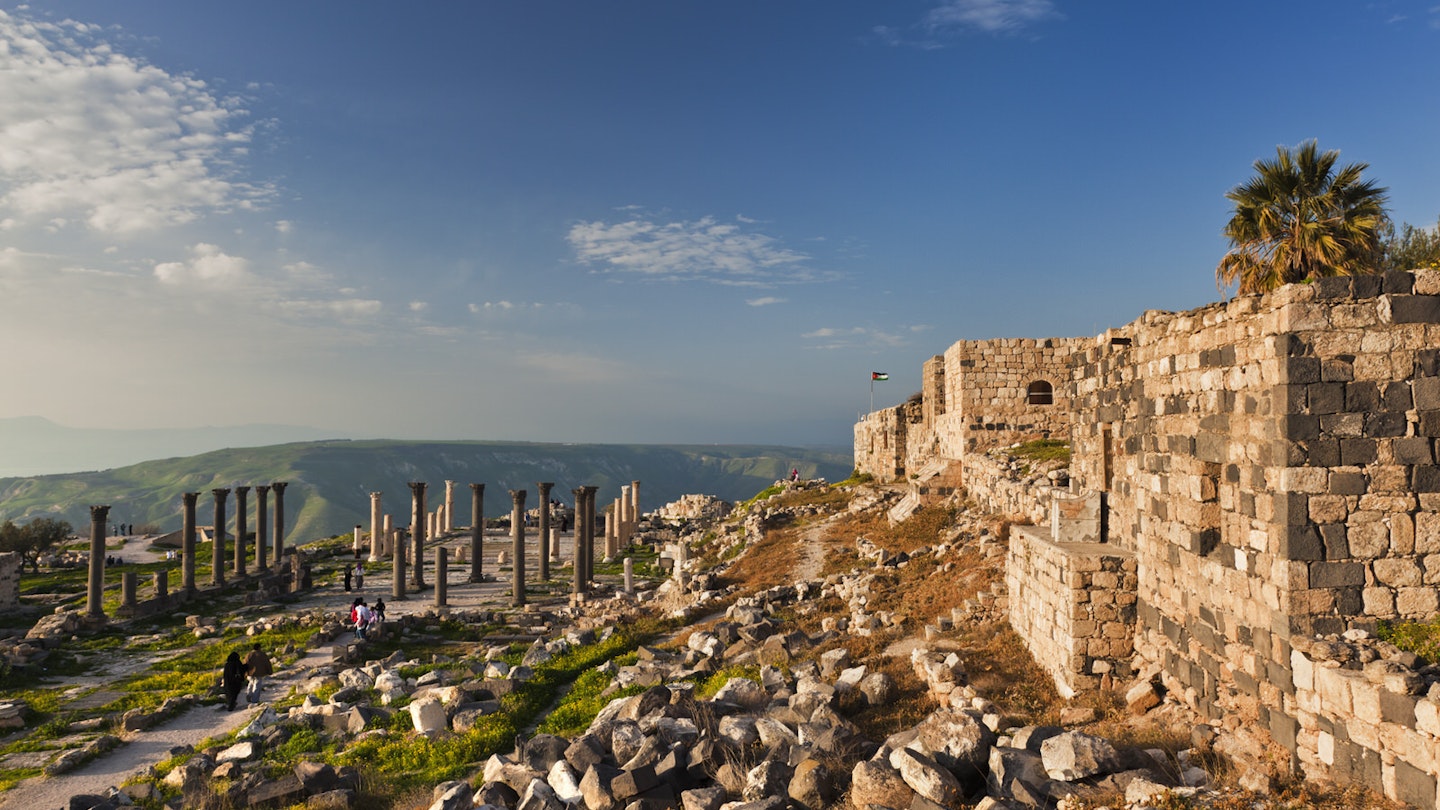Best in Travel is here! Discover 2024’s destinations
Share
Jul 31, 2018 • 4 min read

Most travellers bypass the north of Jordan, drawn instead to the renowned destinations of Petra, Wadi Rum, and the Dead Sea. However, there’s a compelling new reason to explore the northern regions beyond Amman: a series of innovative community-based tourism projects are beckoning visitors to lesser-known villages in Jordan. Rather than the arid desert dunes and rugged wadis, head north to discover fertile wheat fields, deciduous oak forests, olive groves, and quaint communities that are now embracing tourism.
Initiated by Baraka Destinations, an Amman-based firm dedicated to fostering sustainable tourism, these northern villages present an ideal opportunity for those eager to immerse themselves in authentic Jordanian culture. Moreover, an essential advantage is knowing that your travel expenditures benefit local residents and minimize adverse environmental impacts.

Crafts and Farm-to-Table Feasts in Umm Qais
In 2017, Baraka launched a local tourism initiative in the tranquil village of Umm Qais. Exploring the ancient city of Gadara, which was inhabited from the Ottoman era until the 1980s, is a major attraction of the area; however, Umm Qais offers numerous activities to captivate visitors for more than the typical couple of hours spent in the vicinity.
Baraka inaugurated a five-room B&B called Beit Al Baraka, which provides stunning views across neighboring countries from a citrus-rich garden that supplies fresh oranges for breakfast juice. Additionally, they involved the local community by training residents in showcasing their traditional crafts to visitors. As a consequence, visitors can now participate in basket-weaving workshops on the vine-covered terrace of the B&B or learn to craft baskets using palm and banana leaves, reeds, and straw.

Exploring the ruins of Gadara with Ahmed, a guide nurtured amid these ancient structures, adds a personal touch to the experience. He shares captivating stories from his youth during the tour. Additionally, Um Sulaiman welcomes visitors into her home, offering farm-to-table dinners featuring local delicacies like gras, a herb-filled bread soaked in olive oil, and makmora, chicken baked in dough. Since its opening, the B&B has welcomed over 1800 visitors and supports more than 50 local families, effectively revitalizing this overlooked rural area.

Art and Archaeology in Pella
To experience Baraka’s latest location, Beit Al Fannan (meaning ‘house of the artist’ in Arabic), approach the distinctive reddish-brown clay retreat through a narrow passage adorned with vibrant poppies, daisies, and grass. Set in a three-storey villa atop a hill overlooking Pella, a vital archaeological site in Jordan that is still undergoing excavation, the villa was designed by the esteemed Jordanian architect and artist Ammar Khammash.
Step inside this B&B, nestled in the eastern foothills of northern Jordan Valley, and experience an ambiance where curvy interiors replace sharp angles, creating a warm and inviting atmosphere. Uniquely crafted without machinery, the villa was constructed by hand and includes furniture made by local blacksmiths and carpenters. Inside, Khammash’s art decorates the walls, showcasing his significant works through unfinished paintings and sketches. Additionally, whimsical touches in the top-floor studio evoke creativity with paint brushes, canvases, and art books thoughtfully strewn about, transforming this space into an informal retreat for artistic expression.

Beyond the art, the archaeological excavation of Pella attracts many visitors. Baraka offers guided tours led by locals who have participated in the excavations for over 30 years, providing valuable insights into the site’s rich history. From the villa’s spacious balconies, guests overlook one of Jordan’s oldest settlements. Pella, founded in the Neolithic period, has been continuously inhabited since 8000 BC, showcasing significant historical landmarks, including early Christian churches and monumental Bronze Age city walls. Visitors can stroll through the expansive grounds of this 10-acre site and experience a profound sense of exploration, particularly as Pella remains largely undiscovered by mass tourism.
Meaningful Map of Jordan
Baraka’s efforts to highlight these hidden gems of Jordan earned it a spot on the inaugural Meaningful Travel Map of Jordan, created by Tourism Cares and the Jordan Tourism Board. This map features projects orchestrated by nonprofit organizations or social enterprises that provide enriching cultural experiences for travelers while directly benefiting disadvantaged communities. Initiatives in Umm Qais and Pella encapsulate this blend of tourism that carries a social conscience.





